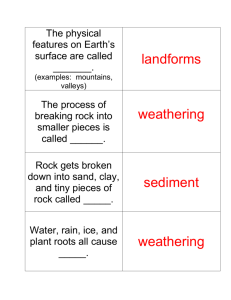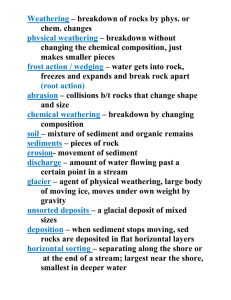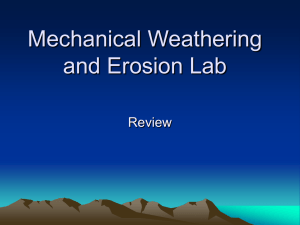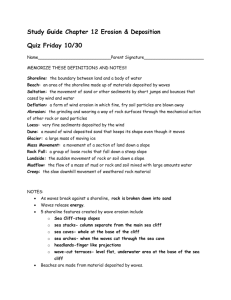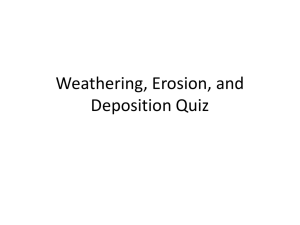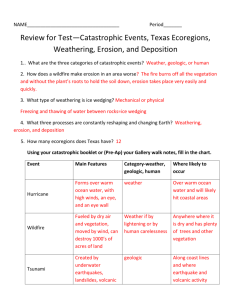Agents of Erosion: Weathering and Transport Notes
advertisement
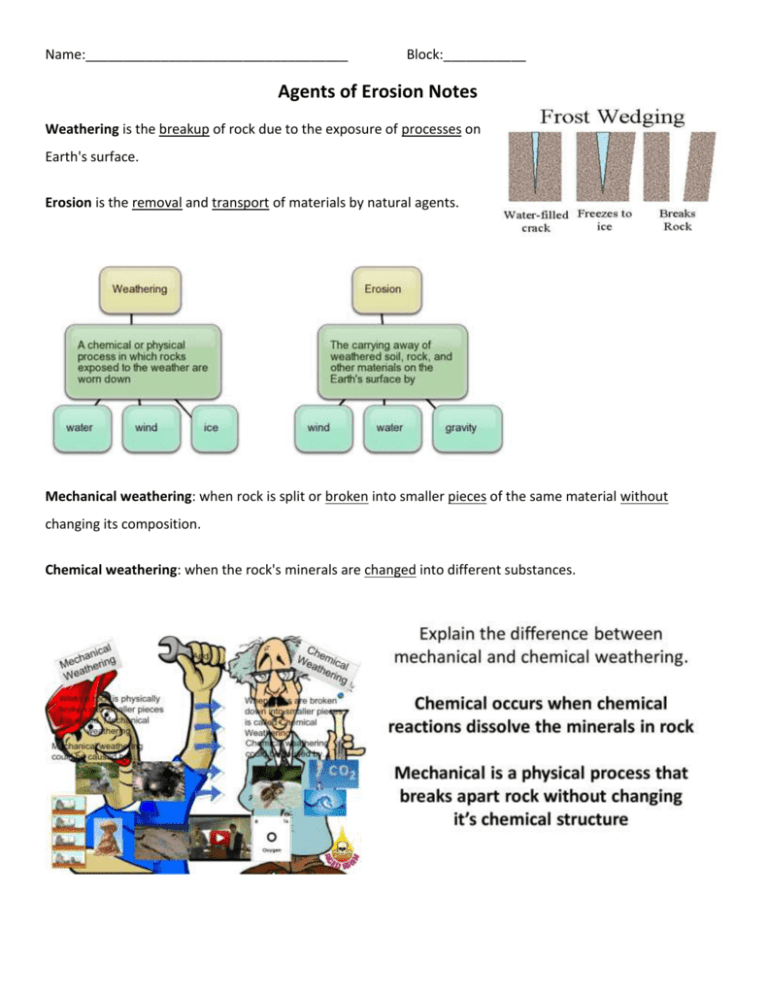
Name:___________________________________ Block:___________ Agents of Erosion Notes Weathering is the breakup of rock due to the exposure of processes on Earth's surface. Erosion is the removal and transport of materials by natural agents. Mechanical weathering: when rock is split or broken into smaller pieces of the same material without changing its composition. Chemical weathering: when the rock's minerals are changed into different substances. Agent of Erosion: Gravity Mass movement refers to the downward transportation of weathered materials by gravity. Landslide is the movement of a mass of bedrock or loose soil and rock down the slope of a hill, mountain, or cliff. Different types of landslides: Creep: Slow, unperceivable movement of soil down a slope. Slump: Blocks of land move downhill along a surface that curve into the slope. Caused when the slope becomes too steep to be supported. Earthflows: mass of weathered material that has been saturated with water flows downhill. Mudflows: rapid movement of water that contains large amounts of suspended clay and silt Agent of Erosion: Ice Glaciers pick up and move particles ranging in size from fine powder to house sized boulders. The glacier can move because at the base of the glacier, the weight causes grains of ice to partially melt and acts as a lubricant for the whole mass. Glaciers also move because the ice grains are flattened and can glide past the other grains. Glaciers erode bedrock by dragging particles and creating long parallel grooves called striations and smooth the rock. When glaciers move they carve out the valley floor in the shape of a “U”. Rock material eroded by glacial ice can be carried on top, within, or be dragged below the glacier. Ice Deposits: Till: the unsorted sediment deposited by a glacier. Moraine: a large deposit of till. Agents of Erosion: Wind Wind can pick up and move loose rock material and can smash the sediment against another rock causing weathering. Deflation is the removal of loose particles by the wind. Abrasion is the wearing away of rock material by windblown sand. When strong, steady winds lift great amounts of silt and clay from the topsoil, a dust storm results. Dust in the atmosphere can be carried great distances (even over oceans)! Wind Deposits: Loess- unlayered silt particles deposited by the wind. Sand dunes- hill of sand deposited by the wind. Agents of Erosion: Running Water Rapidly flowing water has a lifting effect that can split off and move rock fragments. Running water also erodes at its bed by using sand and gravel as cutting tools. These sediments are rounded because of the water. A river transports its load in three different ways: 1) In suspension- when the river is carrying the silt, clay and fine sand. 2) In solution- when the river contains dissolved mineral matter from the bedrock. 3) In its bed load- when the river rolls the sand, pebbles, and boulders along the bottom. Rivers erode their bed and form “V” shaped valleys. A stream cannot erode its bed to a level any lower than the level of the largest body of water into which it flows. This is called the base level. Water Deposits: A river will deposit a part of its load of sediment when either the river’s energy or the amount of water decreases. Rivers can erode their banks until they create a “cut through”. The river will then deposit sediment and create an oxbow lake. A delta forms when river flows into a quiet or larger body of water causing the sediments to deposit in a fan shape. An alluvial fan can form when a mountain stream meets the flat base of the mountain. A delta forms when a river empties into a larger body of water. An alluvial fan forms on land where a river emerges from a mountainous area and flows out onto a more gently sloping plain. The decrease in slope causes the river to decelerate and deposit sediment, forming an alluvial fan.

